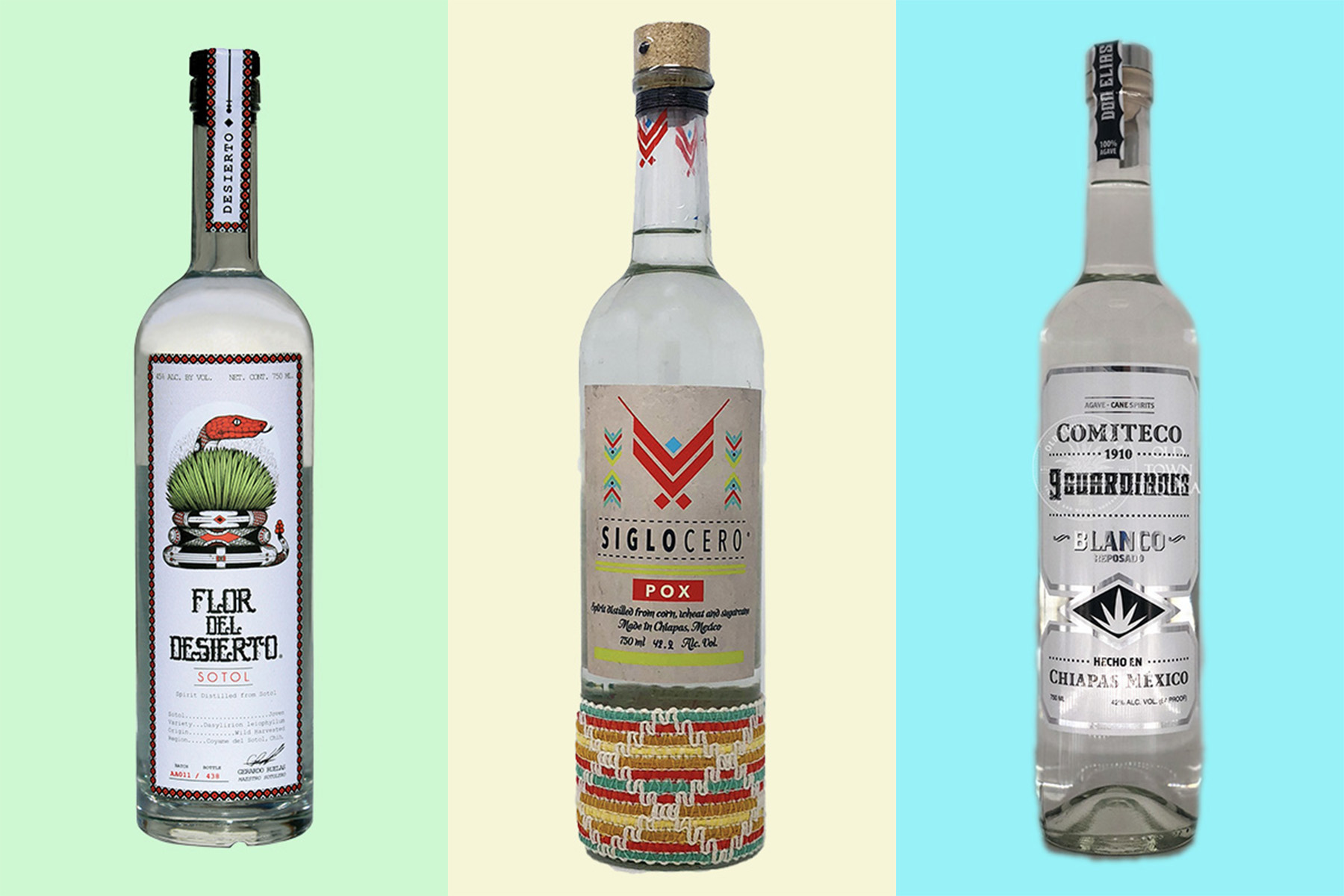UPDATE 3/9/2022: With the launch of Kilinga Bacanora— see below — there is yet another Mexican spirit to discuss that isn’t tequila or mezcal.
“There’s actually a huge tradition of rum in Mexico.”
That’s a welcome and rather random piece of boozy knowledge I received from Justin Lane Briggs, a spirits guru at the importer/distributor Skurnik and the beverage consultant at The Cabinet, a mezcal/rye bar in New York that also features an impressive collection of obscure and unknown spirits from Mexico — like the aforementioned rum (“Rum in Mexico dates back to the 16th century, and there’s as much rum produced in Mexico as there is in all of the Caribbean countries combined,” as Briggs notes).
But there’s also a coconut liqueur, plus a few cousins to mezcal and a couple of spirits that present some extremely rare flavor profiles (“lactic acid” not being your usual tasting note). Below, you’ll find Briggs’s notes on spirits from Mexico that are not tequila or mezcal, plus our own thoughts on Kilinga’s debut (and yes, there are now more than six spirits listed below).
Charanda
“It’s a style of rum from the state of Michoacán, in Mexico. They have to use sugarcane from the central valley of the area, which is grown in unique, iron-rich soil. A product like Charanda Urupuan has green tropical notes but also some funk, or a beautiful ‘stank’ for lack of a better word. It’s fresh sugarcane fermented for 10-11 days, then distilled in a pot still much, then blended with molasses distilled on a column still, so molasses meets agricole. Overall, the spirit balances the baritone of molasses with a light grassy funkiness.
A real problem is that Charanda is sort of endangered. Michoacán is where they grow avocados, and cartels have taken control of the area and forced out other agriculture. The sugarcane for Charanda is literally under fire.”
Sotol
“This is what I call mezcal adjacent. It’s not agave, but a cousin to agave and it’s cooked, fermented and milled like a mezcal. One big difference is the sotol plant will reproduce if you leave its root structure intact. Like tequila, you can only make it in certain areas; it’s protected by Denomination of Origin and limited to three states in Mexico. There are a lot of different flavor profiles, from chocolate-y and rich, to piney and grassy. Depending on what you use, it’s a good substitute for mezcal in a cocktail or a real curveball; in a Negroni, for example, its earthiness can actually make the drink taste even more bitter.”
Pox
“It’s pronounced more like pōsh. It’s a traditional spirit from Chiapas, an indigenous Mayan community. It’s distilled from grain, corn and sugarcane. It’s savory, tropical and vegetal all at once. It’s like the bridge between moonshine and agricole that we didn’t know we needed! There can be a bit of a barbecue note, too, and you might pick up things like pickled mustard seed and Worcestershire sauce on the nose. It’s really cool!”
Raicilla
“It’s a style of mezcal from outside the official mezcal states. This is from Jalisco (usually associated with tequila). It often has a much long fermentation period for as much as 2-3 weeks, while mezcal is typically more like 4 or 5 days. It also uses a lot of varieties of agave, not just Blue Weber. The fermentation process can lead to long chains of funkier esters, sort of like a Jamaican rum. There are often lactic notes here, and it can be really expressive. It can be harder to work within cocktails; you want to put it in something stirred, and temper that acidic quality.”
Comiteco
“Comiteco is from Chiapas, and it’s distilled from pulque, the sap or honey from the agave, sometimes mixed with sugarcane. You’re not cooking the agave ‘flesh’ here. It’s often leaner and more angular, a bit like some unaged brandies like grappa or pisco or blanche Armagnac.”
Liqueurs and other spirits
“Kalani is based in the Yucatán. It’s made with coconut, but it’s not like a coconut rum — it’s natural, clean and clear. There’s nothing cloying about it; you don’t get a suntan lotion vibe as you do with other flavored coconut spirits.
Some other ones to watch out for (and typically avoid) are mezcal cremas — they’re heavily sweetened and flavored, but there’s not a lot of quality commercial ones so far. There’s excellent Mexican amari like the Haas Brothers Amargo-Vallet. It’s similar to Angostura, but rootier. And it’s a full-size bottle.
A lot of production in Mexico is based on so many agricultural variables. You’ll even find rice used to produce Mexcian sake.”
Just launched here in the U.S., Kilinga is an agave spirit (Bacaonora) native to Sonora, Mexico that has a multi-century history but is new to these parts. It’s similar in style to mezcal, although from a specific region in Mexico and made from agave Pacifica. Depending on the expression and age, the releases feature floral, herbal, smoky or caramel notes.
Join America's Fastest Growing Spirits Newsletter THE SPILL. Unlock all the reviews, recipes and revelry — and get 15% off award-winning La Tierra de Acre Mezcal.
